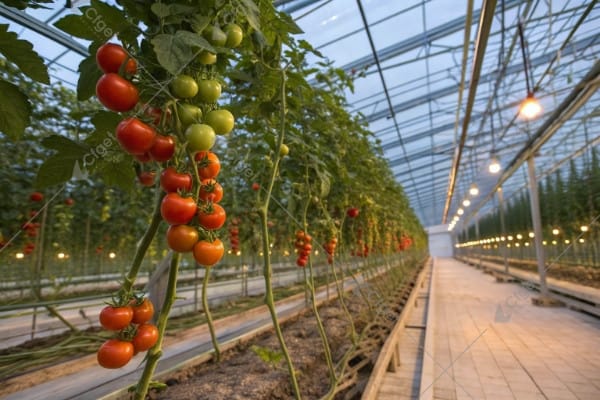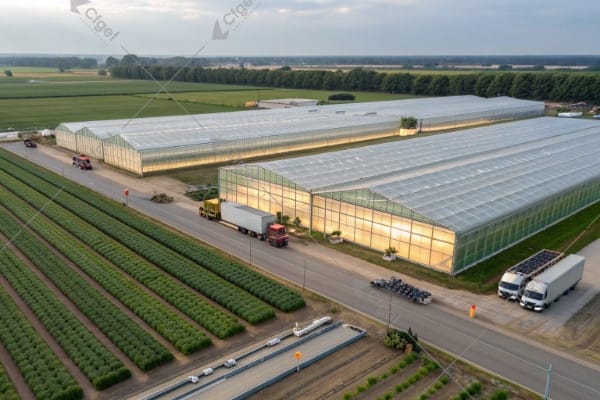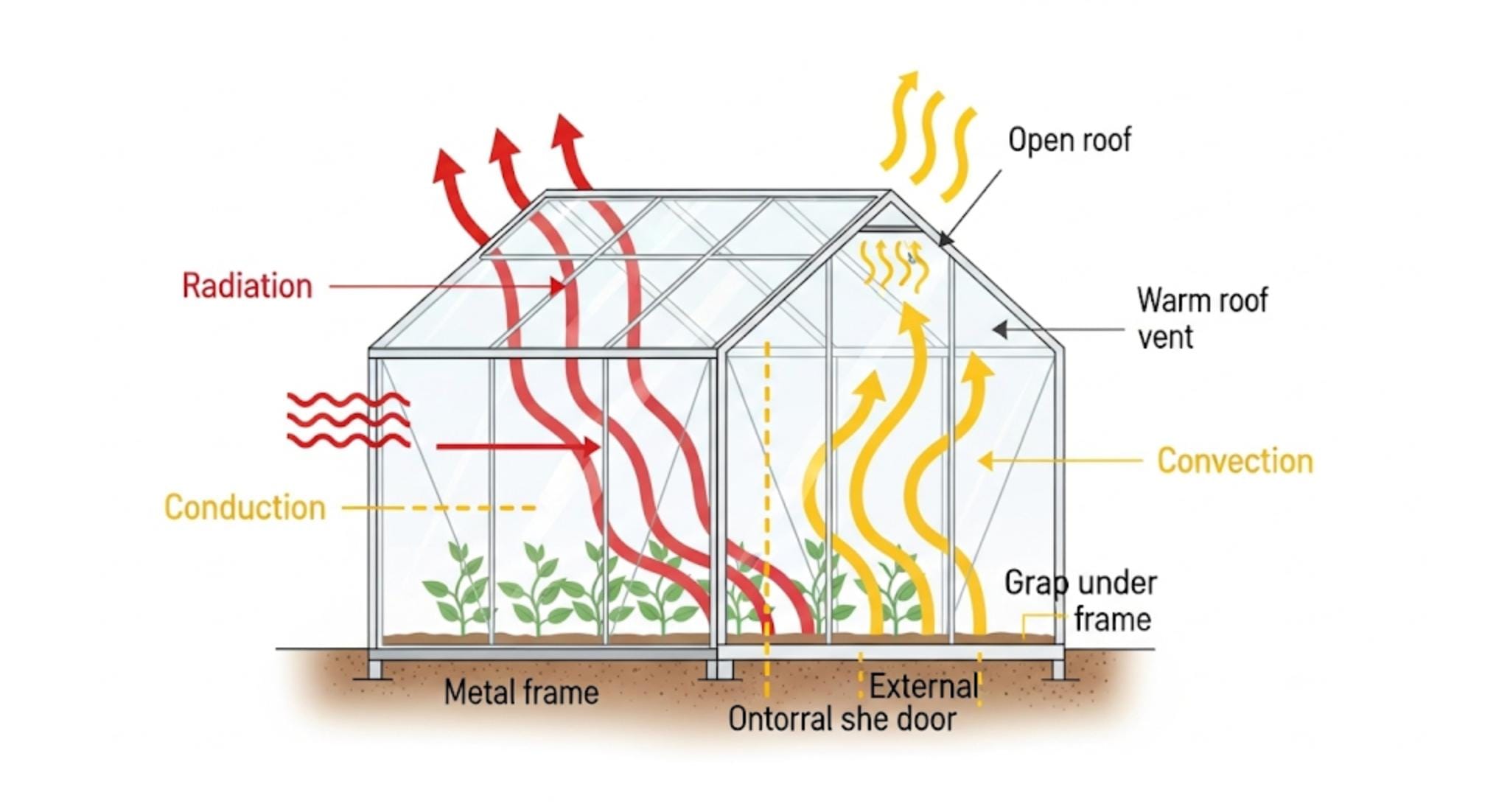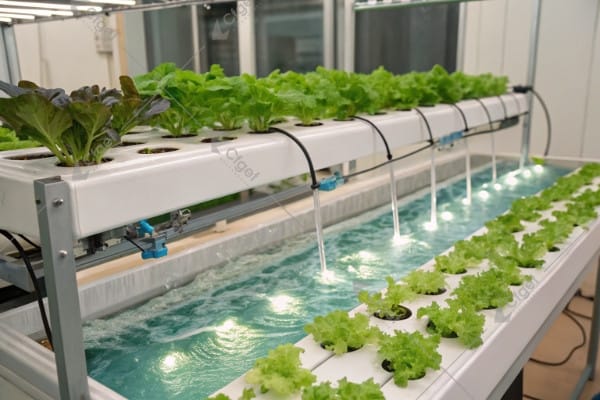Medical plant cultivation demands precise environmental control, yet many growers struggle with inconsistent yields and quality. The financial impact of these challenges can be devastating, especially for commercial operations trying to stay profitable in this competitive market.
Optimizing a medical plant greenhouse environment requires integrated systems for odor control, humidity management, light deprivation, and pest management. With over 28 years of experience designing specialized greenhouses, I’ve found that customized solutions addressing these four key areas consistently produce the highest quality yields.
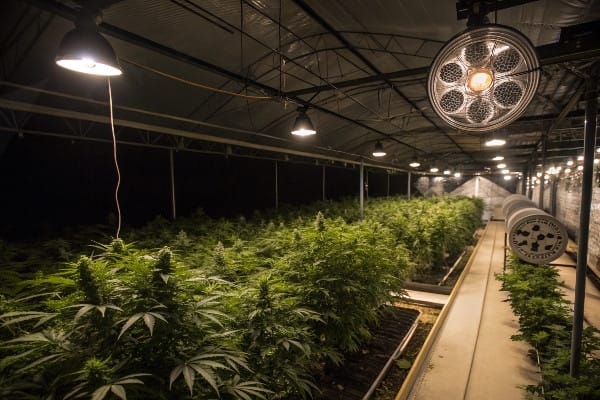
Throughout my career at CFGET, I’ve worked with countless medical plant cultivators across Southeast Asia, Europe, America, and Central Asia. What I’ve learned is that regardless of location, the fundamentals of creating an optimal growing environment remain the same. The difference lies in how we adapt these principles to local conditions and specific cultivation goals.
Don’t Miss:——Exploring Greenhouse Types: Finding the Perfect Structure for Your Needs
You might like:——Mastering Strawberry Greenhouse Cultivation: Best Practices for Optimal Growth?
How to Effectively Control Odor in a Commercial Medical Plant Greenhouse?
The strong smell of many medicinal plants can create problems with neighbors and may violate local regulations. Without proper odor control, you risk complaints, fines, or even forced closure of your otherwise productive operation.
Effective odor control in commercial medical plant greenhouses requires a multi-layered approach including carbon filtration systems, negative pressure environments, and strategic air circulation. These systems must be properly sized for your specific facility and integrated with overall climate control for maximum effectiveness.
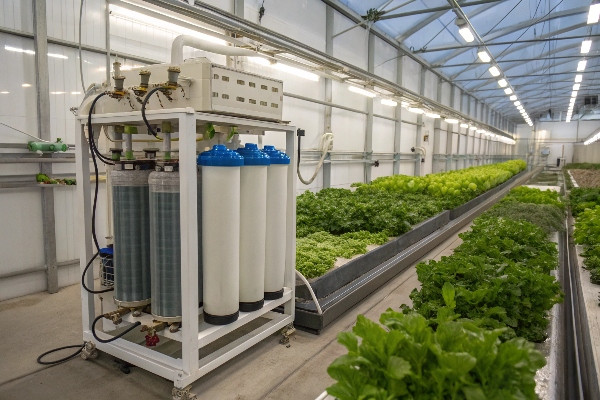
When I first started designing medical plant greenhouses, I underestimated the importance of comprehensive odor control. During a project in Colorado, I witnessed firsthand how a single complaint from a neighboring business almost shut down a multi-million dollar operation. This experience changed my approach forever.
Odor control begins with understanding the source and behavior of plant terpenes. These volatile organic compounds are responsible for the distinctive smell but behave differently depending on temperature and humidity. In warm conditions, terpenes become more volatile and travel farther, making odor control more challenging.
The most effective solution combines several technologies working together. Carbon filtration remains the gold standard, but must be properly sized. I recommend calculating your air exchange requirements and then adding 25% capacity to your carbon filtration system. This ensures adequate coverage even during peak flowering when odor is strongest.
Negative pressure environments are equally important. By maintaining lower air pressure inside the greenhouse than outside, any air leakage flows inward rather than outward, containing odors within the structure. This requires careful balance with your HVAC system and properly sealed doorways.
For larger operations, I often recommend dividing the growing space into zones with separate filtration systems. This approach allows more precise control and reduces the load on any single system. It also provides redundancy if one system requires maintenance.
Many of my clients have found success with emerging technologies like UV-C light treatment and ozone generators as supplementary measures, though these must be used with caution as they can affect plant health if improperly implemented. For extremely sensitive locations, biofilters using soil and microorganisms can provide an additional layer of odor neutralization.
Managing Humidity Levels for Optimal Medical Plant Growth and Mold Prevention
High humidity creates perfect conditions for mold and mildew to attack medicinal plants, destroying crops and profits. Yet too-dry conditions stress plants, reduce yields, and compromise quality in these moisture-sensitive crops.
Optimal medical plant humidity management requires different levels for each growth stage: 65-70% for seedlings, 55-60% for vegetative growth, and 40-50% during flowering. Achieving these targets demands integration of dehumidification systems, proper air circulation, and strategic irrigation timing.
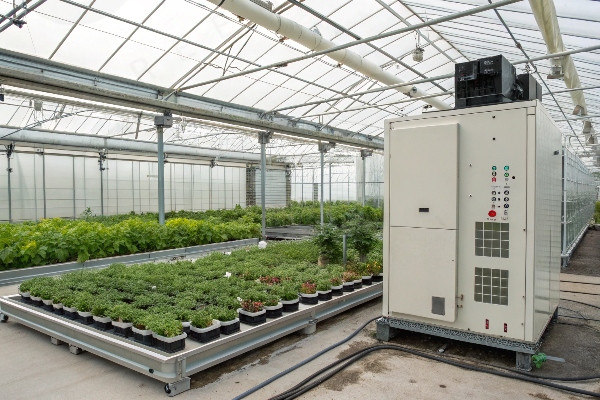
I still remember visiting a client’s operation in Thailand where humidity regularly exceeded 80%. Despite investing in premium genetics and nutrition, they were losing nearly 30% of each harvest to botrytis (bud rot). The solution wasn’t simply adding more dehumidification—it required completely rethinking their environmental approach.
Humidity management in medical plant cultivation requires both precision and flexibility. These plants have distinct humidity requirements that change dramatically throughout their lifecycle. This makes static solutions ineffective and potentially harmful to plant development.
For effective humidity control, I recommend a multi-faceted approach that begins with proper greenhouse design. The structure itself should incorporate adequate ventilation, including roof vents, side vents, and circulation fans. However, in many operations, these passive systems must be supplemented with active dehumidification.
When selecting dehumidification equipment, consider both capacity and energy efficiency. Most commercial medical plant operations require removal of 1-2 gallons of water per light per day during peak transpiration periods. This means a 10,000 square foot facility might need to remove 200+ gallons of water daily from the air alone.
Strategic irrigation timing also plays a key role in humidity management. By watering plants at the beginning of the light cycle, you allow maximum evaporation time before the cooler dark period when condensation risks increase. This simple scheduling adjustment can significantly reduce humidity spikes.
Temperature differential management is often overlooked but critically important. When warm, moisture-laden air contacts cooler surfaces (like greenhouse covering), condensation forms—creating ideal conditions for mold development. Maintaining consistent temperatures throughout the growing space, particularly avoiding cold spots, helps prevent this dangerous condensation.
For clients in particularly humid regions, I often recommend subdividing growing spaces with plastic barriers to create manageable microclimates. This approach allows targeted dehumidification in critical areas like flowering rooms while using less energy-intensive methods in vegetative sections.
Implementing Light Deprivation Systems for Precise Flowering Control in Greenhouses
Many medical plants’ flowering depends on strict light schedules, but light leaks in standard greenhouses trigger stress responses, reducing potency and yields. Without precise control, growers face inconsistent harvest cycles and compromised crop quality.
Light deprivation systems allow medical plant growers to precisely control the flowering cycle regardless of season. Automated blackout systems with 100% light blocking capability, proper sealing, and climate adaptation features enable year-round production cycles and consistent, high-quality harvests.
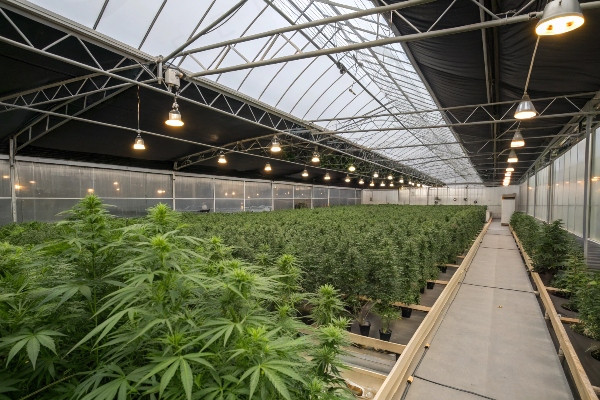
I’ve helped design light deprivation systems across diverse climates, from the scorching heat of Central Asia to the damp conditions of Southeast Asia. Each environment presents unique challenges that standard solutions often fail to address.
Light deprivation—or "light dep"—systems have revolutionized medical plant greenhouse production by giving growers precise control over the plant’s photoperiod. Many medicinal plants are highly photoperiod-sensitive and transition to flowering when exposed to 12 hours of darkness. By controlling this light/dark cycle artificially, growers can induce flowering regardless of the natural seasons.
When designing light deprivation systems, material selection is paramount. The blackout material must block 100% of light while resisting degradation from UV exposure, humidity, and repeated operation. We typically recommend reinforced polyethylene materials with aluminum layers that provide both light blocking capability and reflective properties to manage heat load.
The mechanical system supporting the blackout material is equally important. Pull-wire systems work well for smaller operations, while motorized roll-up systems offer greater reliability for larger commercial facilities. Whatever system you choose, it must be designed for the specific dimensions of your greenhouse to ensure complete coverage without gaps.
Sealing the edges of blackout systems presents a particular challenge. Even tiny light leaks can prevent proper flowering or create inconsistencies across the crop. We’ve developed specialized sealing systems using overlapping materials and magnetic strips that maintain a complete light seal even after thousands of operation cycles.
Climate management becomes more complex when using light deprivation. When blackout curtains are deployed, they can trap heat and humidity near the plants, potentially creating dangerous conditions. This makes it essential to integrate your light deprivation system with climate controls, potentially including automated vents that operate in coordination with the curtains.
For many of our clients, we recommend automated systems that can be programmed to open and close at specific times, ensuring consistent photoperiods even on weekends or when staff availability is limited. These systems can be integrated with environmental controls to automatically adjust for seasonal changes.
In regions with extreme weather conditions, additional reinforcement may be necessary to prevent damage to the blackout system during high winds or snow loads. Our Central Asian clients particularly benefit from strengthened support systems and additional sealing mechanisms to maintain operation during harsh continental weather patterns.
Integrated Pest Management (IPM) Strategies Tailored for Medical Plant Greenhouses
Traditional pesticide approaches aren’t viable for medicinal plants due to strict testing requirements and consumer safety concerns. Without effective pest management, entire crops can be lost to infestations or fail compliance testing, resulting in devastating financial losses.
Effective medical plant IPM combines preventive measures, biological controls1, and compatible organic treatments within a structured monitoring program. This approach maintains plant health while ensuring end products meet stringent regulatory requirements for consumer safety.
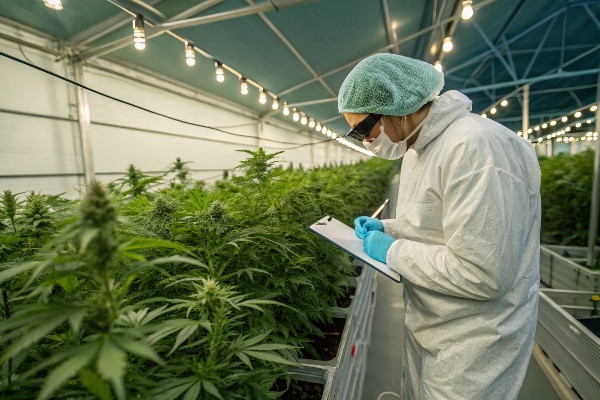
The first major medical plant greenhouse I designed in Washington state was nearly perfect—optimal light, advanced climate controls, efficient workflow—but we overlooked comprehensive IPM planning. Three months after opening, they faced a devastating spider mite infestation that destroyed nearly half their crop.
Developing an effective Integrated Pest Management2 strategy for medicinal plants requires a fundamental shift in thinking from conventional agriculture. Rather than reactive treatment of problems as they arise, successful IPM focuses on creating an ecosystem that naturally suppresses pest populations while maintaining compliance with strict testing requirements.
The foundation of medical plant IPM begins with rigorous exclusion protocols. Every greenhouse facility should implement strict entry procedures including dedicated footwear, protective clothing, and transition zones between the outside environment and growing areas. HEPA filtration on air intake systems further reduces the introduction of outdoor pests and pathogens.
Biological controls form the cornerstone of effective IPM strategies. Predatory insects such as Amblyseius swirskii for thrips control or Phytoseiulus persimilis for spider mite management create a balanced ecosystem where pest outbreaks are naturally controlled. These beneficial organisms require specific environmental conditions to thrive, emphasizing the importance of integrated climate management3 in your IPM strategy.
Regular monitoring using sticky cards, leaf inspections, and digital microscopy allows for early detection before problems escalate. I recommend establishing a systematic scouting schedule where plants are examined on a rotating basis, with particular attention to new growth and lower leaf surfaces where pests often first appear.
When intervention becomes necessary, botanical and biological products are preferable to synthetic chemicals. Products based on neem derivatives, insecticidal soaps, and microbial agents like Bacillus thuringiensis can be effective while meeting testing requirements when properly applied. However, even organic products must be used carefully with proper documentation and adherence to pre-harvest intervals.
Environmental manipulation provides another valuable IPM tool. Many pests thrive in specific humidity ranges, so periodic adjustment of growing conditions can disrupt their life cycles without harming plants. Similarly, careful irrigation management prevents the wet conditions favored by fungus gnats and root pathogens.
For my clients in different regions, I emphasize the importance of local adaptation. Southeast Asian growers typically face greater pressure from rapidly reproducing pests due to year-round warm conditions, requiring more frequent beneficial insect introductions. European clients often deal with stricter regulatory environments that limit intervention options, making preventive strategies even more critical.
Conclusion
Creating an optimized medical plant greenhouse environment requires integrated systems addressing odor control, humidity management, light deprivation, and pest management. By implementing these specialized solutions, you can achieve consistent quality, regulatory compliance, and maximized yields regardless of location or climate challenges.
Learn about the effectiveness of biological controls in maintaining a balanced ecosystem and preventing pest outbreaks. ↩
Explore this resource to understand how IPM can protect your crops and ensure compliance with safety regulations. ↩
Discover essential climate management techniques to optimize plant health and productivity in your greenhouse. ↩

